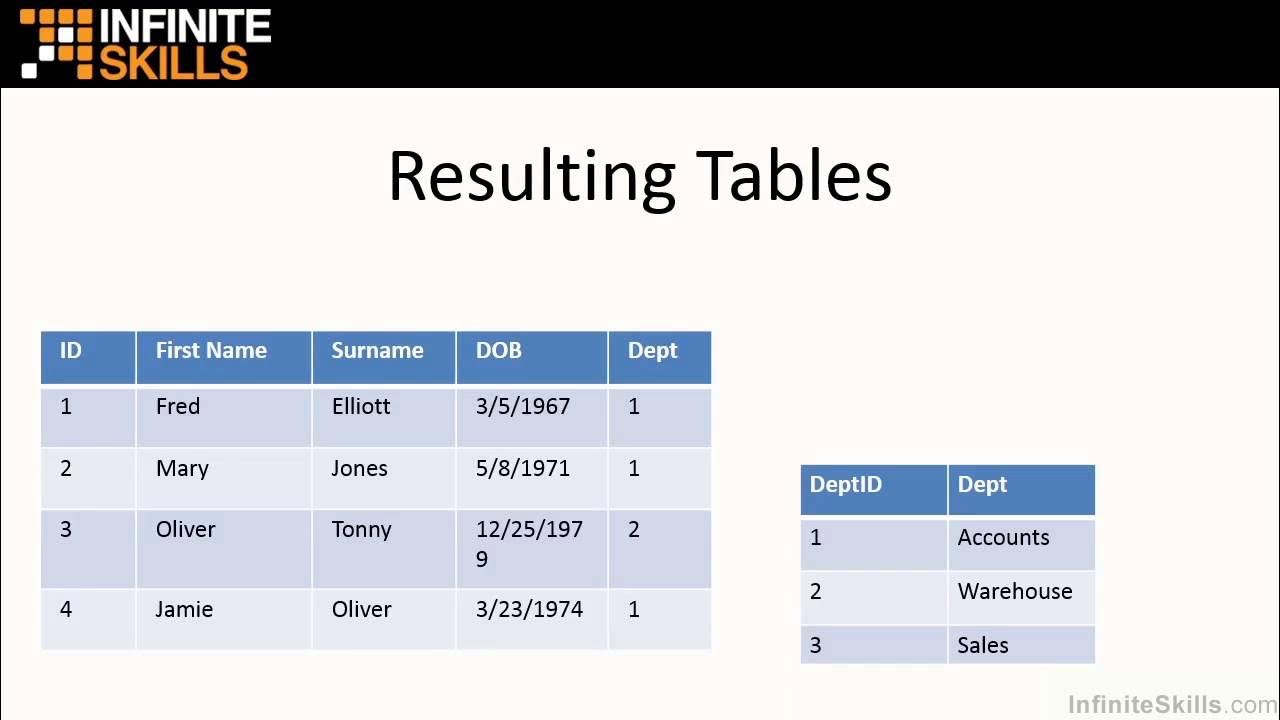RELATIONAL DATABASE | Sistem Basis Data
Summary
TLDRThis video provides a comprehensive introduction to relational databases, covering key concepts like data independence, normalization, and data integrity. The presenter explains the relational model's structure, which involves tables with minimal redundancy and effective data access. Key components such as DDL, DML, and data integrity constraints are discussed, alongside the relational links between tables. The video also covers database design processes, lifecycle, and how applications interact with databases. It includes practical examples of relational database components and walks through the essential steps of database implementation and maintenance. This tutorial serves as an essential resource for understanding and designing relational databases.
Takeaways
- 😀 Relational databases are a model of database representation using tables, first introduced by Edgar Codd in 1972.
- 😀 The main goals of relational databases are data independence, eliminating inconsistencies and redundancies through normalization, and improving data access speed.
- 😀 The key characteristics of relational databases include tabular structure, single language usage for all users, and data relationships through values.
- 😀 A relational database consists of three core components: data structure, data manipulation, and data integrity.
- 😀 Data in a relational database is organized in two-dimensional tables with minimal redundancy and the ability to modify and delete without causing errors.
- 😀 Data manipulation is performed using DDL (Data Definition Language) for creating and altering database structures, and DML (Data Manipulation Language) for inserting, deleting, updating, and selecting data.
- 😀 Data integrity constraints include domain integrity, entity integrity (unique and non-null attributes), and referential integrity (relationships between tables).
- 😀 The relational database design lifecycle includes phases such as system definition, database design, implementation, data loading, and application conversion, followed by testing and validation.
- 😀 The database design process includes gathering and analyzing requirements, creating conceptual models, selecting the appropriate DBMS, and translating designs into logical and physical structures.
- 😀 Transactions in databases can be categorized as retrieval, update, or mixed (both retrieval and update). Transaction design is crucial for ensuring smooth operations in applications like booking systems or data entry forms.
Q & A
What is a relational database?
-A relational database is a database model presented in the form of tables. It was introduced by E.F. Codd in 1972. The primary goal of relational databases is to reduce data redundancy, improve data consistency, and increase the speed of data access.
What are the main characteristics of relational databases?
-Relational databases have three main characteristics: 1) A tabular structure, where data is organized into tables without branches. 2) A single language is used for all users. 3) Data is linked via data values, establishing relationships between tables.
What is the purpose of normalizing data in a relational database?
-The purpose of normalizing data is to reduce redundancy and inconsistency by organizing data into separate, related tables. This process ensures the data is efficient and eliminates unnecessary duplication.
What is the difference between DDL and DML in relational databases?
-DDL (Data Definition Language) is used to define the structure of the database, such as creating, altering, and dropping tables. DML (Data Manipulation Language) is used for managing the data within the database, such as inserting, deleting, updating, and selecting data.
What is referential integrity in the context of relational databases?
-Referential integrity ensures that relationships between tables are consistent. Specifically, it ensures that foreign keys in one table accurately reference primary keys in another table, maintaining data integrity across tables.
How does a relational database maintain data integrity?
-A relational database maintains data integrity by using several constraints: domain constraints, integrity rules (ensuring data is valid, unique, and not null), and referential integrity (ensuring correct relationships between tables).
What is the role of SQL in relational databases?
-SQL (Structured Query Language) is the language used to interact with relational databases. It allows users to define, manipulate, and query data within the database, as well as maintain database integrity and relationships.
What are the phases involved in the database lifecycle?
-The database lifecycle includes several phases: 1) System definition, 2) Database design, 3) Implementation, 4) Data loading, 5) Application conversion, 6) Testing and validation, 7) Operation, and 8) Monitoring and maintenance.
What is the importance of database design in the system development process?
-Database design is critical as it defines the structure of the data, ensuring that the database is efficient, consistent, and scalable. Proper design minimizes redundancy, improves performance, and supports the application’s functionality.
How does the concept of normalization apply to relational database design?
-Normalization is a process in relational database design where data is organized into multiple tables to minimize redundancy and dependency. It involves breaking down a large table into smaller, related tables and ensuring that the data is structured in a way that eliminates update anomalies.
Outlines

This section is available to paid users only. Please upgrade to access this part.
Upgrade NowMindmap

This section is available to paid users only. Please upgrade to access this part.
Upgrade NowKeywords

This section is available to paid users only. Please upgrade to access this part.
Upgrade NowHighlights

This section is available to paid users only. Please upgrade to access this part.
Upgrade NowTranscripts

This section is available to paid users only. Please upgrade to access this part.
Upgrade NowBrowse More Related Video

A Beginner's Guide to Designing a Relational Database (Databases 101)

Database Normalization 1NF 2NF 3NF

SQL Tutorial | Relational Databases and Key Terms Explained

Banco de Dados - Aula 13

Pengertian Apa Itu Konsep Basis Data | PART 1

50. OCR A Level (H046-H446) SLR10 - 1.3 Introduction to database concepts
5.0 / 5 (0 votes)